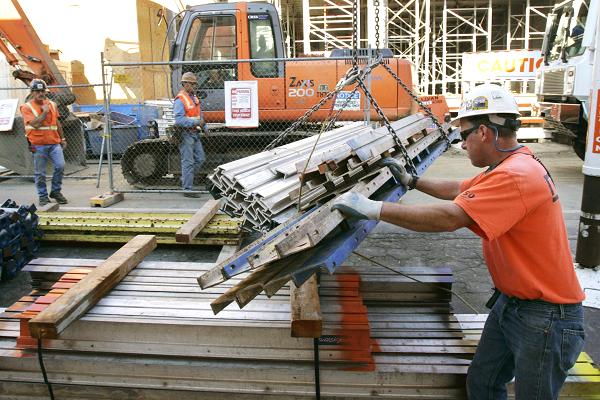- The unemployment rate fell to 3.9 percent in April, an 18-year low, even as nonfarm payrolls rose by just 164,000, the BLS says.
- Economists surveyed by Reuters had expected payroll growth of 192,000 and the jobless rate to drop by one-tenth of a percent to 4.0 percent.
- The closely watched average hourly earnings number rose by 4 cents, equating to a 2.6 percent annualized gain, a shade less than expected.
The unemployment rate fell to 3.9 percent in April, an 18-year low, even as nonfarm payrolls rose by just 164,000, according to a report Friday from the Bureau of Labor Statistics.
Economists surveyed by Reuters had expected payroll growth of 192,000 and the jobless rate to drop by one-tenth of a percent to 4.0 percent. The official jobs tally showed an increase from an upwardly revised 135,000 in March.
“The expectations were a little bit elevated going into this probably just because last month’s report was a little bit weaker,” said Charlie Ripley, senior investment strategist at Allianz Investment Management. “Net-net this was a little bit softer than people were expecting. This goes into a lot of the other data that we’ve been seeing, … a little bit of a soft patch.”
The closely watched average hourly earnings number rose by 4 cents, equating to a 2.6 percent annualized gain, a bit off the pace from the previous month and a shade less than expected. The average workweek was unchanged at 34.1 hours.
A more encompassing measure of unemployment that includes discouraged workers and those holding part-time positions for economic reasons fell to 7.8 percent, the lowest since July 2001. Unemployment for blacks fell to a fresh record-low of 6.6 percent, down 0.3 percent.
The drop in the unemployment rate came amid another decline in the labor force participation rate to 62.8 percent, the lowest since January. The number of people counted as out of the labor force swelled by 410,000 to 95.74 million.
Professional and business services created the most new jobs, with 54,000, while manufacturing and health care added 24,000 apiece. Mining saw 8,000 new jobs, bringing to 86,000 the total unemployment growth since October 2016 for a sector that President Donald Trump promised to target when he campaigned.
Services jobs overall led the way, with 119,000 new positions. Leisure and hospitality increased by 18,000.
In addition to the upward revision for March, February’s number edged lower from 326,000 to 324,000.
The lack of wage pressure likely will be the one takeaway for Federal Reserve officials. Central bankers are on a pace to continue raising rates, but the lack of inflation could augur for a more patient pace than some in the market anticipate.
“It really defies the law of supply and demand,” Amy Glaser, senior vice president at Adecco Staffing, said of the muted wage inflation. Employers “are seeing an increase in turnover and they’re really weighing whether they need to increase wages.”
Glaser thinks that pressure continues to build in the wage pipeline and could increase dramatically as the year goes on.
“As we near toward the retail peak season, as we start looking to fiscal quarter three, companies are going to be forced to make that change,” she said. “I’m also seeing with clients that I’m dealing with, when they do choose to make wage increases, they’re not just doing 2 or 3 percent, they’re doing it with a big bang, 10 or 20 percent.”
Job creation overall tended strong toward full-time positions, also an indicator that wage pressures could be building. Full-time jobs rose by 319,000 while part-time positions fell by 350,000, according to the household survey.

